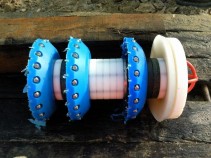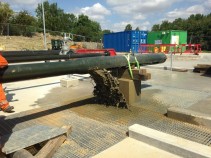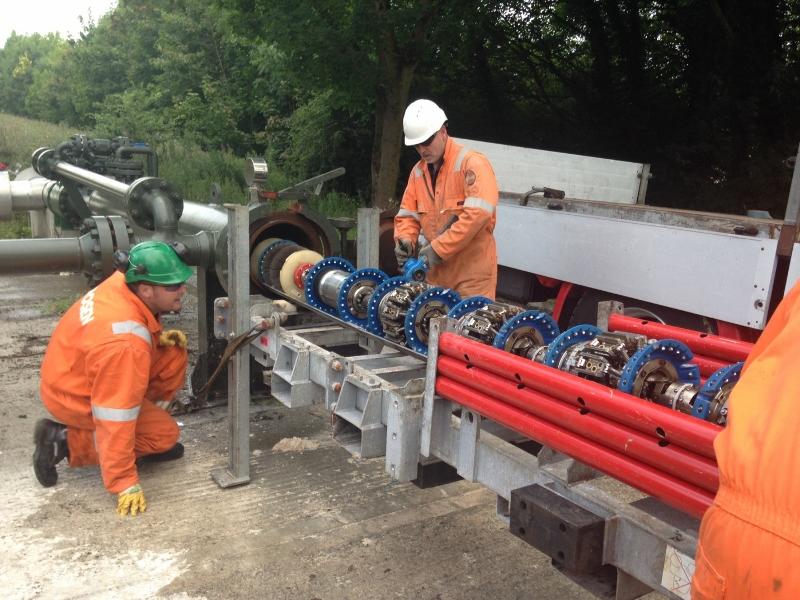CEMEX UK Cement operates a 92km pipeline which runs from Kensworth Quarry on the Dunstable Downs to its cement manufacturing plant at Rugby. The pipeline transports around 5,000 tonnes per day of chalk slurry which represents around 80% of the raw material requirements for the Rugby kiln.
With the line operating at 124 bar, maintaining its integrity is not only critical to the operation of the plant but there are also wider safety and environmental responsibilities since it passes through hundreds of different land ownership boundaries and beneath numerous roads, motorways, railways, canals and rivers on its way to Rugby.
To assess the condition of the 26km Kensworth to Brogborough section of the line, an internal cleaning and inspection operation was recently successfully carried out using a series of pipeline inspection gauges (or PIGs as they are known).
The PIG’s comprise a number of close fitting discs mounted on a central carrier and travel inside the pipeline in a similar way to the piston in a bike pump.
Each PIG has a different function and initially cleaning PIG’s are used to remove accumulations of build up and debris from the wall of the line. These are followed by intelligent inspection tools which carry a number of sensors and data loggers to record and measure in detail the features on the line such as weld locations and also anomalies such as pipe wall loss due to corrosion.
 The operation was carried out “on line” during normal pumping operations using the Kensworth slurry pumps to propel the pigs through the line in a slug of water sandwiched in between slurry being pumped to Rugby. A total of 13 cleaning pigs were run followed by 2 inspection PIG’s over 11 days. All thankfully reappeared! (see pic left: a cleaning PIG on arrival at Brogsborough).
The operation was carried out “on line” during normal pumping operations using the Kensworth slurry pumps to propel the pigs through the line in a slug of water sandwiched in between slurry being pumped to Rugby. A total of 13 cleaning pigs were run followed by 2 inspection PIG’s over 11 days. All thankfully reappeared! (see pic left: a cleaning PIG on arrival at Brogsborough).
A special thank you to Paul Russell (CEMEX Pipeline and Project Engineer) for managing this activity and making sure it did not impact on the kiln operation at Rugby. (Pic below is of the catcher at Brogborough).
 Data collected by the inspection tools is currently being analysed to determine the overall condition of this section of the line including corrosion locations and rates. This will enable potential problem areas and their location to be identified and repairs to be carried out in good time in order to maintain the integrity of the line and ultimately keep the slurry flowing safely to our biggest UK kiln in Rugby.
Data collected by the inspection tools is currently being analysed to determine the overall condition of this section of the line including corrosion locations and rates. This will enable potential problem areas and their location to be identified and repairs to be carried out in good time in order to maintain the integrity of the line and ultimately keep the slurry flowing safely to our biggest UK kiln in Rugby.
